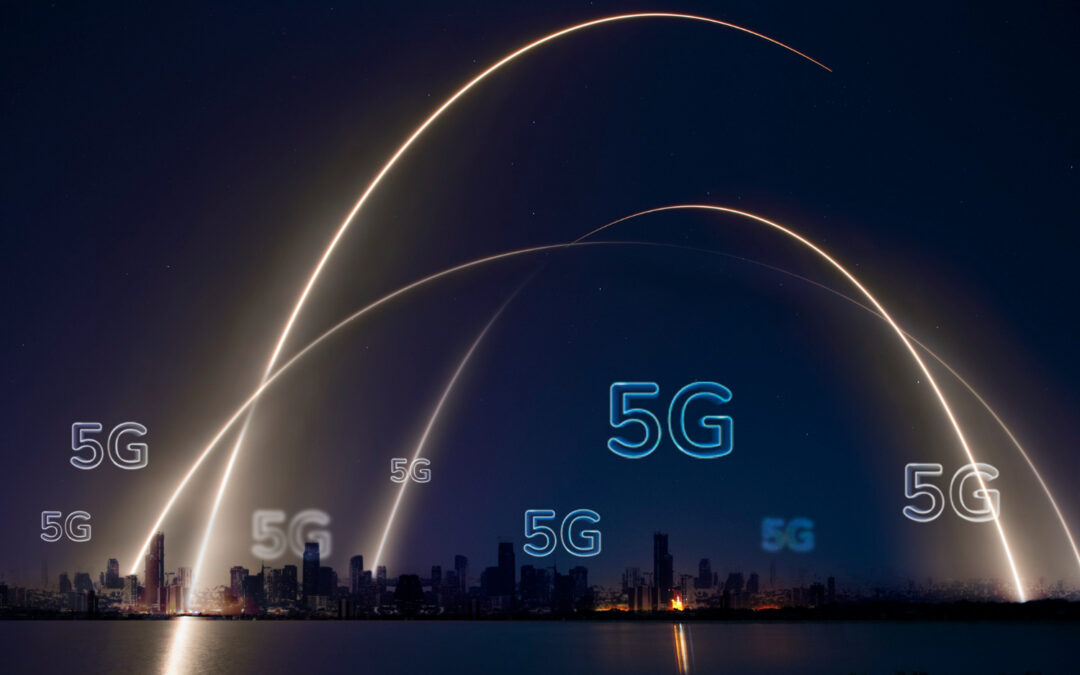The concept of Smart manufacturing has been around for a while. But intranet bandwidth and speed hindered the realization of Smart processes. With the rollout of 5G, a new generation of doing business is moving from nice-to-have to necessary. Communication between factory devices can be fully automated and analyzed, revealing insights that optimize operations and drive down costs. 5G and AI, together, will transform industries into factories of the future.
How to Leverage the power of AI in 5G Networks
5G is a complex network that involves millions of interconnected devices and offers low-latency data transfer and new capabilities such as network slicing and edge computing. For communications service providers (CSPs), designing, optimizing, and managing their own 5G services to focus on quality customer experiences will require a different approach as they transition away from traditional 4G processes. Advanced analytics (AI) platforms will be essential to achieving this transformation.
- Massive IoT device and data management: 5G is the primary driver in creating an interconnected tech ecosystem. Devices such as sensors, mobile phones, drones, and many others used on 5G networks will expand across industries to pioneer a massive IoT world generating data. CSPs, being at the center of the 5G ecosystem, can leverage AI for actionable insights from these devices, enhancing data management operations. With AI, data from mobile IoT devices help companies learn more about users’ lifestyles, hobbies, and activity preferences, allowing CSPs to deliver personalized engagements.
- Network planning and optimization: CSPs need to plan and optimize their networks to cater to higher traffic demands and varied latency requirements in 5G networks. AI can play a crucial role in providing granular insights about the network and user experiences. It can give real-time visibility of customer engagements, helping CSPs quickly adapt to changing network conditions and maximize performance while reducing field visit efforts for infrastructure maintenance. AI inspection drones can gather valuable information on field equipment functionality, and it’s all made possible with real-time network performance insights.
- Intelligent network management: AI can enable a simplified, streamlined way to manage the complexities of a 5G network, allowing CSPs to move from a reactive to a proactive approach. It offers predictive maintenance and recovery services, resolving issues at faster rates by quickly detecting and diagnosing them, thus moving toward a self-healing network. AI-enabled chatbots can report issues and automatically fix network problems in real time. For example, in the case of a CSP network outage, an AI-based network management solution can access the historical data and make parameter changes like adjusting the reference power of a cell site, antenna tilt, and many others.
- Zero-touch automation: CSPs are making their 5G networks programmable and flexible, with on-demand services being activated and delivered in almost no time. The lifecycle processes behind these services are automated through what’s known as zero-touch automation. AI is the foundation of this automation in 5G, making decisions while a new service gets activated and an old one gets shut down. When implemented in an automation platform, AI can autonomously pinpoint network issues, correlate them with previous actions, and then automatically execute an action, moving towards autonomous remediation.
- Enhanced customer experiences: A CSP can distinguish its business from the competition by providing compelling experiences to its customers. A factor in helping achieve this is using AI-enabled chatbots or automated responses during customer support engagements to quickly resolve customer queries, allowing round-the-clock service and reducing calls to call centers. Functionality like sentiment analysis determines a user’s emotion from textual and voice data helping the chatbot drive the flow of conversations. Many other examples can prove how AI leads to enhanced customer experiences and magnifies the probability of customer retention.
- New revenue streams: AI provides extensive customer insights based on customer data, leading to more personalizing services. With a more precise understanding of customers’ behavior and interests, CSPs can recommend the right products, services, and plans, generating new revenue opportunities.
- Carbon footprint reduction: Reducing carbon emissions is a top priority for most CSPs. AI can make significant contributions to energy-saving efforts. An AI solution can predict real-time data traffic patterns in a 5G network and activate sleep periods when necessary. Such dynamic management of network resources can reduce overall power consumption. As mentioned previously, AI-based drones can be used for site surveys, reducing the need for physical field visits and thus saving energy.
AI and 5G Together Drive Innovation
5G compatibility adoption is essential for the CSP industry as more consumers and businesses rely on these networks. With AI technologies, CSPs are uniquely positioned to mine the vast data generated in their 5G networks, allowing them to grow their businesses, reduce time to market, and become more competitive.
By developing an AI strategy that encompasses a range of advantages in reach, CSPs can prepare for growing consumer demands, open new business opportunities, and improve their sustainability efforts. A crucial step in this initiative is finding a business partner with the expertise to lead a comprehensive AI implementation. Yet, understanding AI’s advantages are vital to ensure an organization benefit from them. With a combination of a thorough AI strategy and a leading tech consultant, CSPs can transform their networks and join the 5G revolution.

